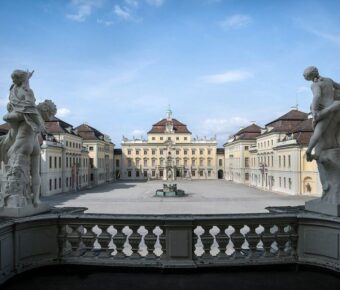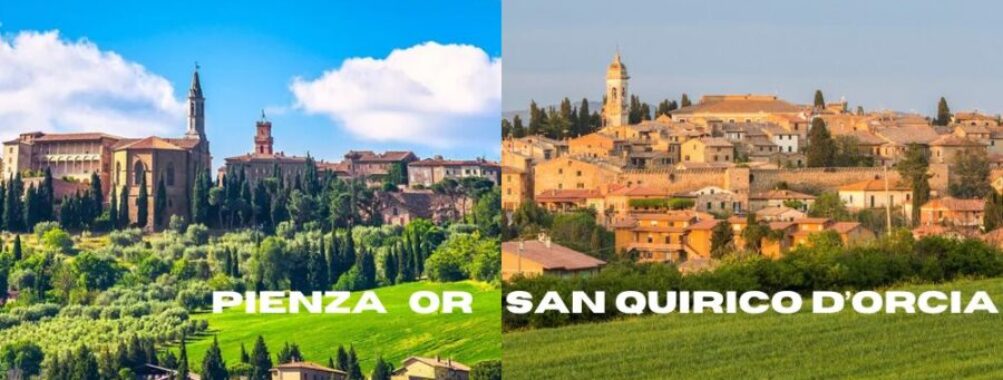
Pienza vs San Quirico d’Orcia: Which Hidden Tuscan Gem Should You Visit in 2025?
Nestled in the stunning Val d’Orcia region of Tuscany, Pienza and San Quirico d’Orcia offer two distinct experiences for travelers seeking authentic Italian charm. These medieval towns sit just 6 kilometers apart, each with its own unique appeal and character.
For most visitors, Pienza makes an ideal base with its Renaissance architecture, excellent restaurants, and stunning views of the Tuscan countryside, while San Quirico d’Orcia offers a more peaceful, less touristy atmosphere perfect for experiencing local life. The stretch of road between these towns provides some of the most photographed landscapes in Tuscany.
The choice between these towns often comes down to personal travel style. Pienza draws more tourists with its UNESCO status and famous pecorino cheese, whereas San Quirico maintains a quieter, more authentic feel with its medieval walls and beautiful gardens.
Contents
- Historical Significance and Origins
- Early History and Foundations
- Role in the Tuscan Region
- Cultural Heritage
- Geographical Overview and Landscape
- Val d’Orcia Panoramas
- Cypress Trees and Rolling Hills
- Unique Flora and Fauna
- Architectural Marvels and Artistic Treasures
- Renaissance Influence in Pienza
- Romanesque Structures in San Quirico
- Art and Sculpture
- Culinary Scene and Local Delights
- Traditional Restaurants
- Local Wine Varieties
- Specialty Foods and Dishes
- Accommodation and Lodging
- Charming Hotels and B&Bs
- Rental Apartments
- Farmhouse Stays
- Gardens and Natural Beauty Spots
- Horti Leonini Public Gardens
- La Foce Estate and Gardens
- Hidden Gems of Nature
- Recreational Activities and Experiences
- Exploring the Rolling Countryside
- Thermal Baths and Spa Retreats
- Cultural Festivals and Events
- Beyond Pienza and San Quirico: Excursions and Day Trips
- The Medieval Charm of Siena
- Wine Tours in Montalcino and Montepulicano
- Historic Florence and Pisa from Val d’Orcia
- Frequently Asked Questions
- What are the top attractions to visit in Pienza?
- Can you recommend some local cuisine to try in San Quirico d’Orcia?
- What unique shopping experiences are offered in Pienza?
- Are there any notable historical sites to explore in San Quirico d’Orcia?
- What accommodation options provide the best views in Pienza?
- How does the nightlife in San Quirico d’Orcia compare to that in Pienza?
- More Travel Guides
Historical Significance and Origins
Both Pienza and San Quirico d’Orcia stand as remarkable examples of Tuscan architectural evolution, each with deep roots in medieval and Renaissance periods. These towns played key roles in shaping the cultural landscape of the Val d’Orcia region.
Early History and Foundations
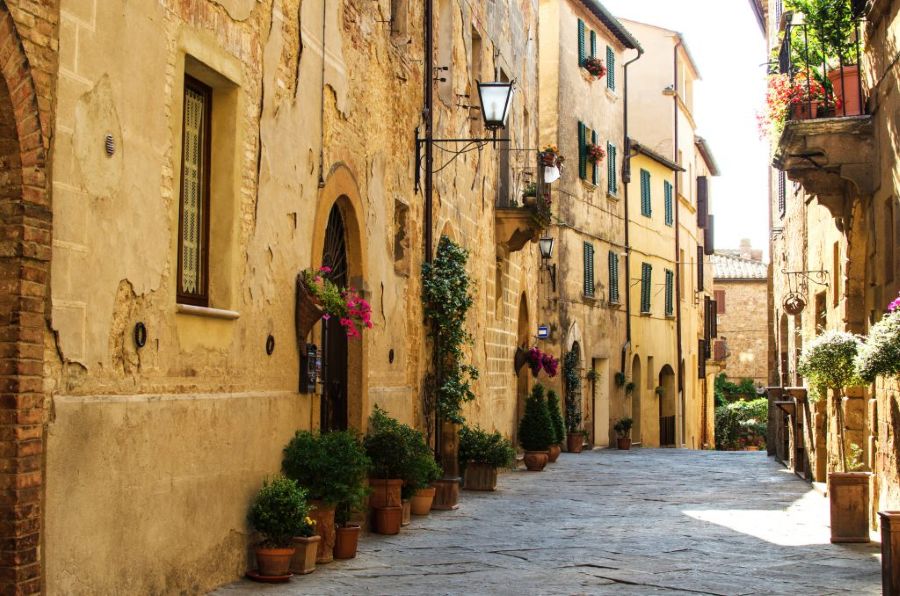
Pienza started as a small village called Corsignano. Its transformation began when Enea Silvio Piccolomini, born there in 1405, became Pope Pius II. The Pope wanted to create an ideal Renaissance city, so he hired architect Bernardo Rossellino to rebuild his hometown in 1459.
San Quirico traces its origins to the ancient Etruscan period. The town grew around the Via Francigena, the famous medieval pilgrimage route connecting Rome to northern Europe. Its strategic location made it a crucial stop for travelers and merchants.
Role in the Tuscan Region
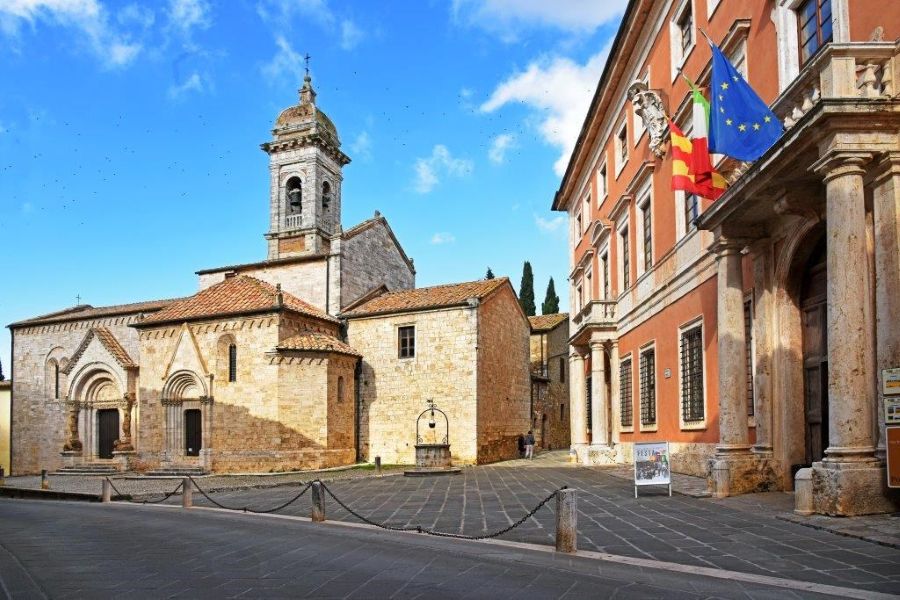
Pienza became a model of Renaissance urban planning. Its perfect geometric layout and harmonious architecture influenced town planning across Italy. The town’s design shows how Renaissance ideals could transform a medieval village into a symbol of human achievement.
San Quirico served as a major stopping point along the Via Francigena. Its Collegiate Church of Saints Quirico and Giulitta displays beautiful Romanesque architecture. The town’s medieval walls and fortifications protected travelers and locals alike.
Trade and commerce flourished in both towns during medieval times. Their position in the Val d’Orcia helped them become important centers for agriculture and wool production.
Cultural Heritage
Pienza earned UNESCO World Heritage status in 1996. Its Renaissance architecture includes the stunning Palazzo Piccolomini and the Cathedral, which showcase perfect 15th-century design principles.
San Quirico preserves its medieval character through narrow streets and ancient stone buildings. The Horti Leonini gardens represent one of Italy’s finest examples of Italian-style gardens from the 16th century.
Both towns maintain strong traditions in food and crafts. Pienza is famous for its pecorino cheese, while San Quirico continues age-old traditions of olive oil production.
The architectural styles in each town tell different stories. Pienza displays unified Renaissance planning, while San Quirico shows layers of history from Roman times through the medieval period.
Geographical Overview and Landscape
Pienza and San Quirico d’Orcia sit nestled in one of Italy’s most beautiful regions, where ancient landscapes meet artistic perfection. The rolling terrain stretches across the Tuscan countryside, creating picture-perfect views at every turn.
Val d’Orcia Panoramas

The Val d’Orcia valley cradles both towns in its gentle embrace, with the Orcia River winding through the stunning terrain below. This UNESCO World Heritage site showcases the perfect blend of natural and cultivated landscapes.
The valley floor spreads out beneath both towns, offering different yet equally stunning viewpoints. Pienza sits on a higher hilltop, providing sweeping 360-degree views of the surrounding countryside.
San Quirico d’Orcia’s position along the ancient Via Francigena pilgrimage route offers unique vantage points of the valley’s clay hills and scattered farmhouses.
Cypress Trees and Rolling Hills
Iconic cypress trees stand like natural exclamation points against the sky, lining rural roads and dotting hilltops throughout the region. These distinctive trees create the classic Tuscan scenes that appear on countless postcards.
The landscape between the towns features gentle slopes covered in wheat fields that change color with the seasons – from bright green in spring to golden in summer and rich brown in winter.
Small gravel roads wind between the hills, connecting ancient farmhouses and villas. Each curve reveals new perspectives of this carefully preserved agricultural landscape.
Unique Flora and Fauna
Wild poppies paint the fields red in springtime, while sunflowers turn entire hillsides yellow during summer months. Native oak trees, including the famous Checche Oak near Pienza, provide shade and shelter for local wildlife.
Small mammals like hares and foxes make their homes in the agricultural fields. Bird watchers can spot kestrels and hawks soaring above the valley.
Local farmers maintain traditional crops like grain and grapes, creating a mosaic pattern across the countryside that supports both agriculture and natural habitats.
Architectural Marvels and Artistic Treasures
The hill towns of Pienza and San Quirico d’Orcia showcase distinct architectural styles that reflect their rich histories. Pienza stands as a masterpiece of Renaissance planning, while San Quirico preserves its medieval Romanesque heritage.
Renaissance Influence in Pienza

Pienza represents the perfect Renaissance city, designed under Pope Pius II in the 15th century. The town’s main square, Piazza Pio II, forms the heart of this architectural gem. Beautiful travertine buildings line the piazza in perfect harmony.
The Palazzo Piccolomini stands as the finest example of Renaissance architecture in Pienza. Its elegant facade features three levels of stone columns and a hanging garden with stunning Val d’Orcia views.
The Pienza Cathedral shows off unique features that blend Gothic and Renaissance styles. Its light-filled interior and geometric patterns make it a must-see landmark.
Romanesque Structures in San Quirico
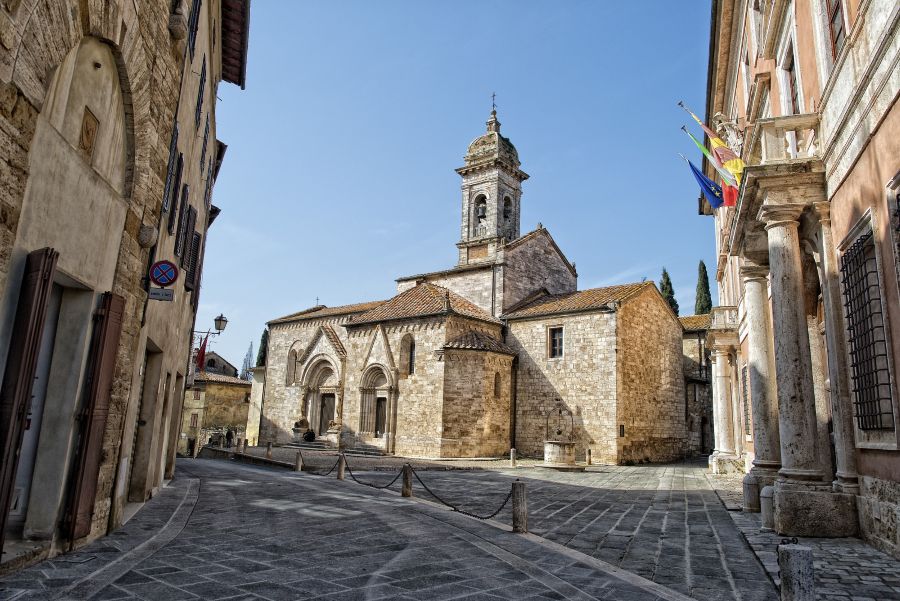
San Quirico’s Collegiata church displays classic Romanesque architecture with its sturdy stone walls and rounded arches. The church’s ornate doorways feature intricate carvings of biblical scenes and mythical creatures.
The Horti Leonini gardens blend medieval design with Renaissance elements. Stone walls and symmetric pathways create a peaceful retreat in the town center.
Ancient city gates still stand guard at San Quirico’s entrances. The Porta dei Cappuccini and Porta Nuova show the town’s medieval defensive past.
Art and Sculpture
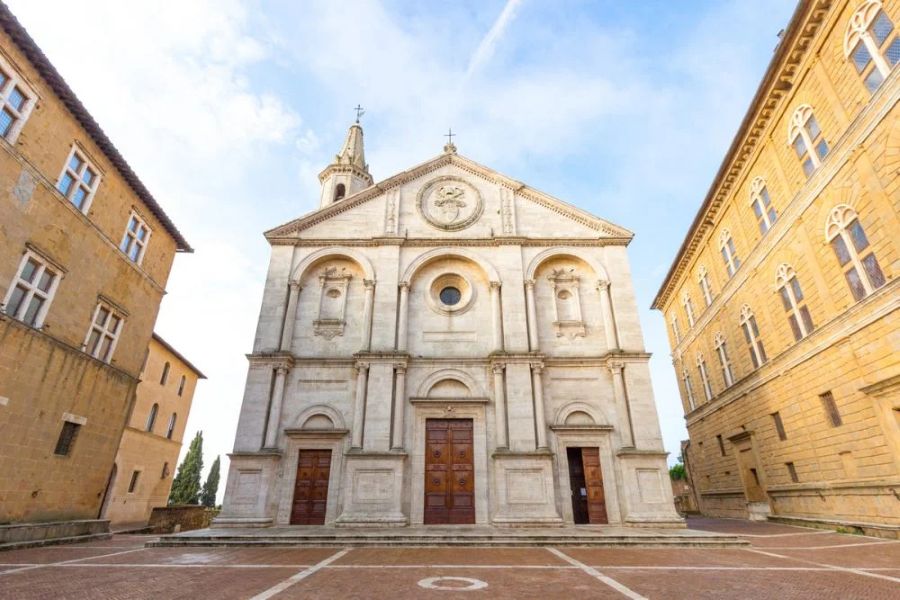
Both towns house precious artworks in their churches and museums. Pienza’s Cathedral holds Gothic altarpieces and painted wooden crucifixes from the 1400s.
San Quirico’s Collegiata features rare medieval sculptures and a wooden Madonna from the 13th century. The church’s stone capitals display expert craftsmanship with plant and animal motifs.
Local museums display collections of religious art, including painted panels and bronze works. Many pieces tell stories of the towns’ patron saints and noble families.
Culinary Scene and Local Delights
Both Pienza and San Quirico d’Orcia offer amazing food experiences that showcase Tuscany’s best flavors. The towns are famous for their rustic cooking, local wines, and specialty products that reflect centuries of food traditions.
Traditional Restaurants
San Quirico’s Osteria Il Tinaio serves classic Tuscan dishes in a cozy medieval setting. Their handmade pici pasta with wild boar sauce is a must-try local favorite.
La Bottega del 30 in San Quirico stands out for its breakfast spread of local cheeses, fresh bread, and honey. The restaurant uses ingredients from nearby farms and gardens.
Pienza’s restaurants focus on showcasing the town’s famous pecorino cheese. Latte di Luna is a local gem known for its cheese-based dishes and rustic atmosphere.
Local Wine Varieties
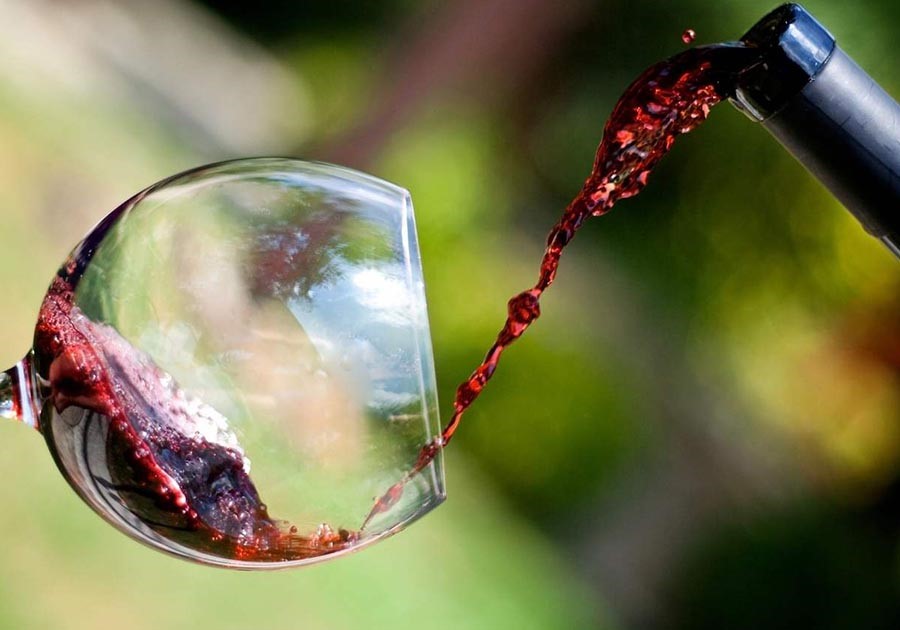
The area sits between two famous wine regions – Montalcino and Montepulciano. Many restaurants offer extensive wine lists featuring Brunello di Montalcino, known for its bold flavor and aging potential.
Vino Nobile di Montepulciano is another prized local wine. Small wine bars in both towns offer tastings of these regional specialties.
Local trattorias often serve house wines made from Sangiovese grapes grown in nearby vineyards.
Specialty Foods and Dishes
Pienza’s pecorino cheese comes in several ages – from fresh to aged. The salty mature versions pair perfectly with local honey and pears.
Both towns excel at making pici pasta – thick, hand-rolled spaghetti that’s unique to this part of Tuscany. It’s often served with sheep’s milk cheese or meat sauces.
Wild boar dishes appear on many menus, especially during hunting season. The meat is used in pasta sauces, stews, and cured products.
Local olive oils come from centuries-old groves surrounding both towns. Many shops offer tastings of new harvest oils in November.
Accommodation and Lodging
Both Pienza and San Quirico d’Orcia offer charming places to stay that capture the authentic Tuscan spirit, from historic hotels to cozy farmhouses nestled in the countryside.
Charming Hotels and B&Bs
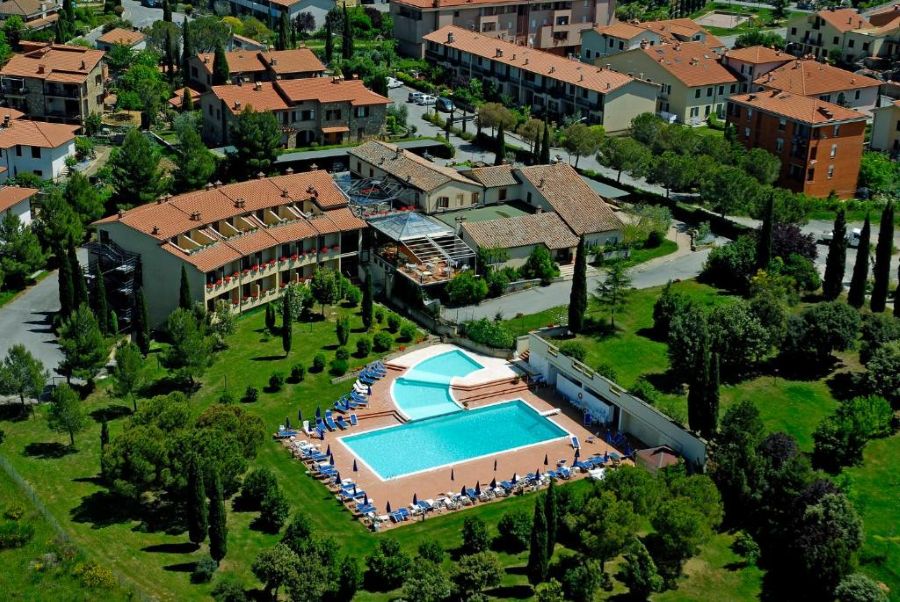
Find great hotel deals at the Hotel Palazzuolo in San Quirico, a family-run establishment known for its garden views and traditional stone architecture. The rooms feature exposed wooden beams and terracotta floors.
The Hotel Rutiliano in Pienza provides guests with panoramic views of the Val d’Orcia. Its rooftop terrace is perfect for sunset watching.
Small B&Bs dot both towns’ medieval streets. Many occupy restored historic buildings with original features like brick walls and carved stone doorways.
Rental Apartments
Vacation rentals fill the historic centers of both towns. Many apartments occupy upper floors of medieval buildings with views across the countryside.
San Quirico’s rentals tend to be slightly more affordable than those in Pienza. The apartments often include kitchen facilities and living spaces.
Properties range from cozy studios for couples to multi-bedroom units ideal for families or groups. Most maintain their historic character while offering modern amenities.
Farmhouse Stays
Traditional stone farmhouses converted into accommodations sit just outside both towns. These agriturismi often produce their own wine and olive oil.
Guests can experience authentic rural Tuscan life while staying close to town amenities. Many properties have swimming pools overlooking the rolling hills.
The farms frequently offer cooking classes and wine tastings. Some even let visitors help with seasonal activities like grape or olive harvesting.
Gardens and Natural Beauty Spots
Both Pienza and San Quirico d’Orcia offer stunning gardens and natural spaces that showcase the best of Tuscan landscape design and wild beauty. These green spaces range from perfectly manicured Renaissance gardens to sprawling estates with breathtaking valley views.
Horti Leonini Public Gardens
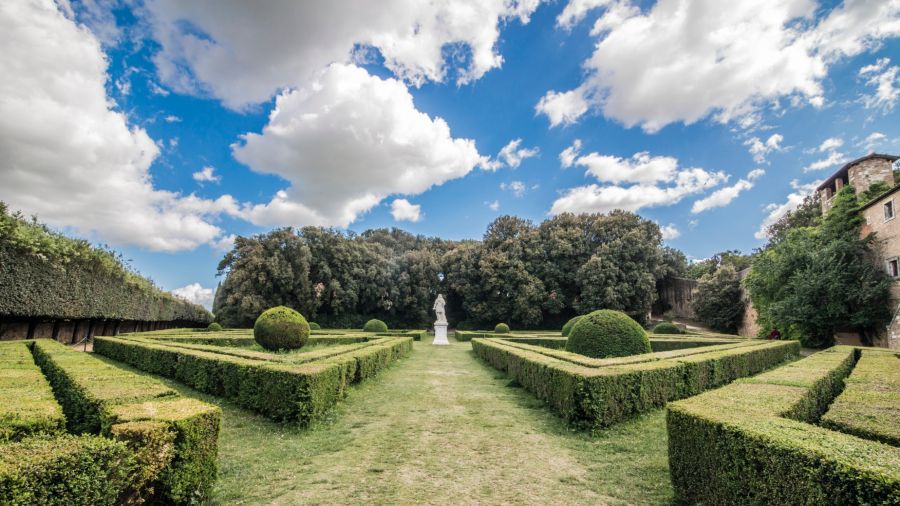
The Horti Leonini in San Quirico d’Orcia stands as a remarkable example of Italian Renaissance garden design. Created in 1580 by Diomede Leoni, these gardens were one of the first public parks in Tuscany – a revolutionary concept for their time.
The geometric patterns of well-trimmed hedges create a stunning diamond-shaped layout. Stone statues peek out from behind carefully maintained topiaries, while gravel paths lead visitors through the different garden sections.
Tall cypress trees line the upper terrace, offering cool shade during hot summer days. The gardens provide perfect spots for morning walks or afternoon picnics, with benches placed strategically throughout the grounds.
La Foce Estate and Gardens
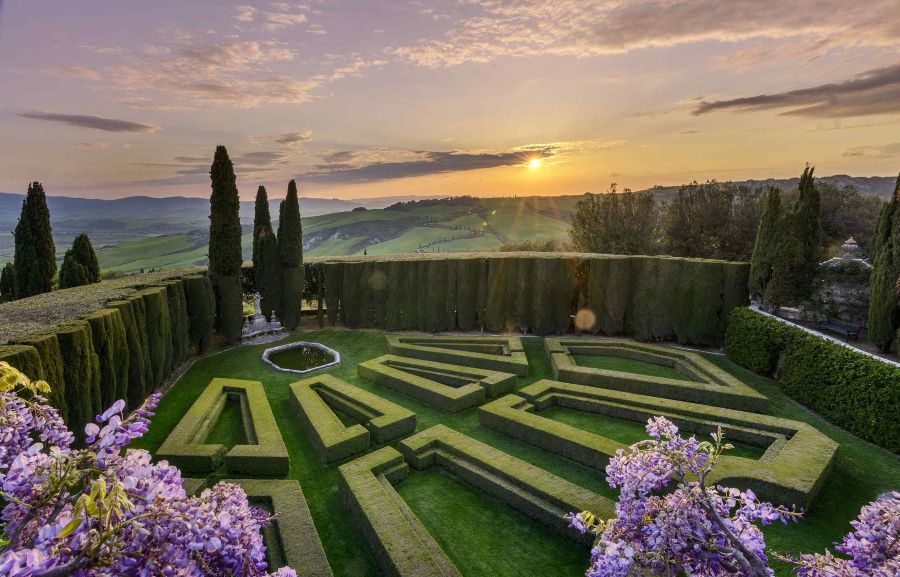
La Foce sits between Pienza and San Quirico d’Orcia, featuring gardens designed by the famous English architect Cecil Pinsent. The property combines Italian and English garden styles with remarkable skill.
Visitors can explore the lemon garden, rose beds, and geometrical lower gardens during guided tours. The wisteria-covered pergola creates magical purple tunnels in spring.
The garden’s most iconic feature is its cypress-lined road that winds up a hillside in a perfect S-curve. This view has become one of the most photographed spots in all of Tuscany.
Hidden Gems of Nature
Small secret gardens and natural spots dot both towns’ landscapes. In Pienza, tiny courtyard gardens hide behind palazzo walls, bursting with climbing roses and herbs.
Wild flower meadows stretch between the towns in spring, creating carpets of red poppies and yellow mustard flowers. Ancient olive groves offer peaceful walking paths with valley views.
Look for the medieval herb gardens near San Quirico’s walls, where monks once grew medicinal plants. These quiet spots still maintain their original layout and many traditional healing herbs.
Recreational Activities and Experiences
Both towns offer unique ways to enjoy the Tuscan countryside through outdoor activities, wellness experiences, and cultural celebrations that showcase local traditions.
Exploring the Rolling Countryside
San Quirico d’Orcia has stunning walking paths through cypress-lined roads and ancient olive groves. The famous Cypress Avenue connects to several marked hiking trails perfect for morning walks or sunset strolls.
Pienza’s location on a hilltop provides amazing views of the Val d’Orcia landscape. E-bike tours are popular for exploring the surrounding farmland and vineyards without too much effort.
Visitors can join guided walking tours to learn about the area’s history while exploring hidden corners of both towns. The best views come at sunrise when morning mist fills the valleys.
Thermal Baths and Spa Retreats
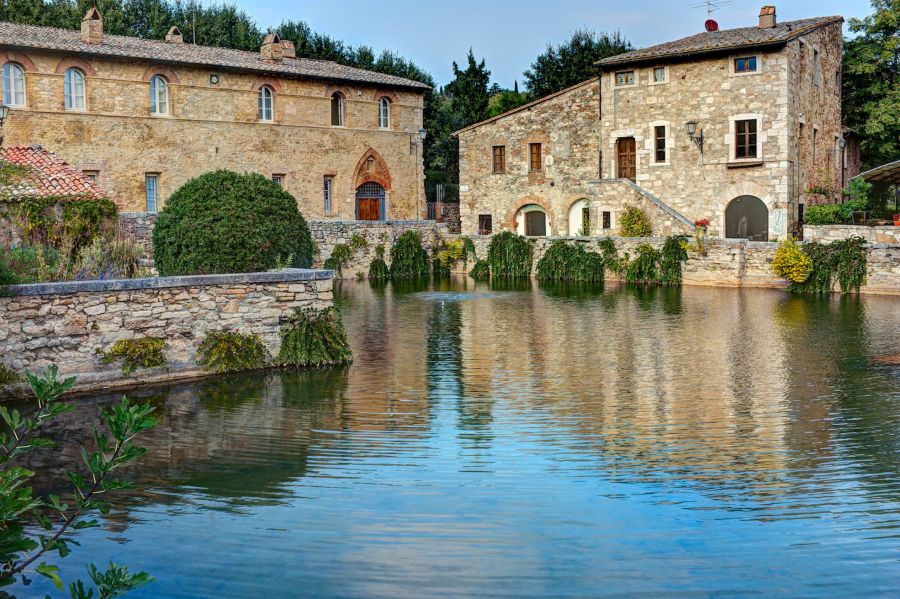
Bagno Vignoni near San Quirico d’Orcia features ancient thermal pools dating back to Roman times. The central plaza has a large 16th-century pool filled with steaming water.
Modern spa facilities offer relaxing thermal treatments using the natural spring water. The outdoor pools provide stunning views of the countryside while soaking in mineral-rich waters.
Several boutique hotels in both towns provide spa services using local olive oil and grape-based treatments. Book thermal spa experiences to enjoy centuries-old wellness traditions.
Cultural Festivals and Events
Pienza celebrates its cheese-making heritage with an annual pecorino festival in September. Local producers showcase traditional methods passed down through generations.
Medieval festivals in San Quirico d’Orcia bring history alive with costumed performances, flag-throwing shows, and traditional music. The Festa del Barbarossa recreates 13th-century life each June.
Both towns host summer concert series in historic churches and courtyards. Wine tastings and food festivals happen throughout harvest season from September to October.
Beyond Pienza and San Quirico: Excursions and Day Trips
The Val d’Orcia region serves as an ideal base for exploring Tuscany’s most treasured destinations. Visitors can take easy day trips to experience medieval cities, renowned wineries, and iconic landmarks.
The Medieval Charm of Siena
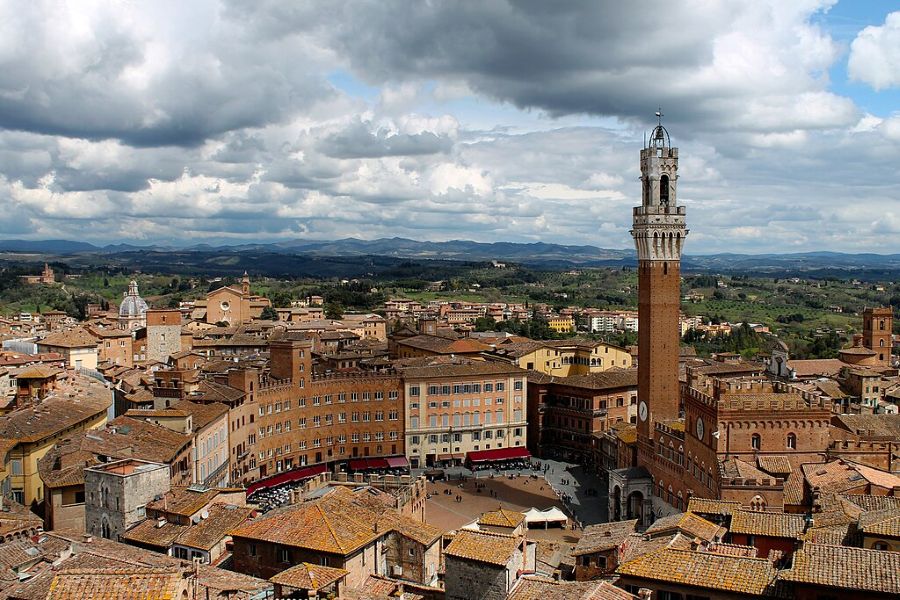
Siena captivates visitors with its shell-shaped Piazza del Campo, where the famous Palio horse race takes place twice each summer. The black and white striped Duomo stands as one of Italy’s finest examples of Gothic architecture.
Travelers should plan to spend at least 6 hours exploring Siena‘s narrow lanes and historic buildings. The city’s medieval towers and ancient walls transport visitors back in time.
The Palazzo Pubblico houses stunning frescoes that tell stories of good and bad government. Its tower offers breathtaking views of the Tuscan countryside.
Wine Tours in Montalcino and Montepulicano
Montalcino’s hilltop position provides spectacular views while visitors sample the famous Brunello wines. Many wineries offer guided tours where guests learn about traditional wine-making methods.
The medieval town of Montepulciano produces the celebrated Vino Nobile. Wine enthusiasts can visit historic cellars built into the underground tunnels beneath the city.
Most wine tours last 3-4 hours and include tastings at 2-3 different estates. Book in advance during peak season from May to October.
Historic Florence and Pisa from Val d’Orcia
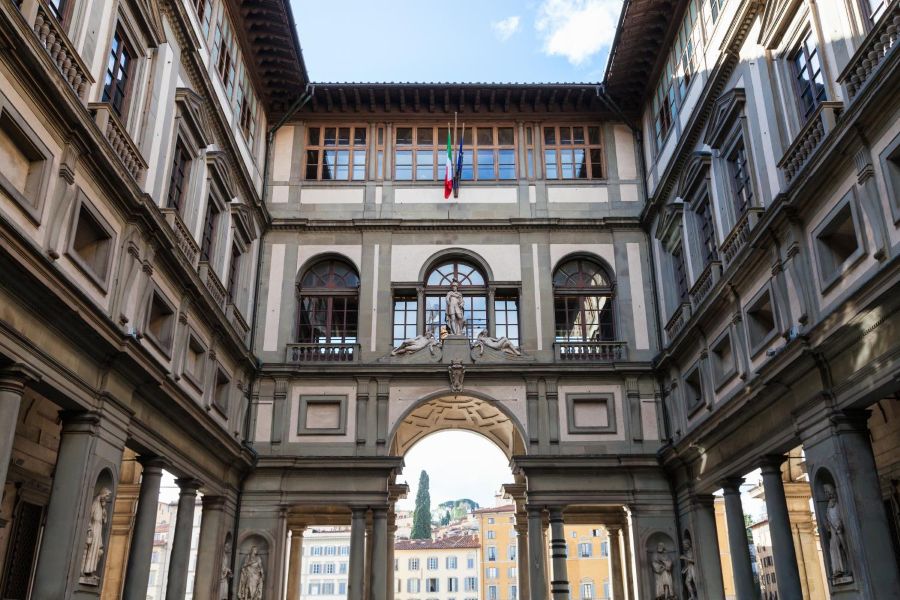
Florence’s Uffizi Gallery and Duomo sit about 2 hours north of Val d’Orcia. Start early to beat the crowds and see Michelangelo’s David at the Accademia Gallery.
The Leaning Tower of Pisa makes a unique photo stop. The surrounding Piazza dei Miracoli includes the ornate Baptistery and Cathedral.
A day trip to Florence needs at least 8 hours to see the main sites. Add 2 more hours for a stop in Pisa to see the famous tower and cathedral complex.
Frequently Asked Questions
These two Tuscan towns offer unique experiences in dining, sightseeing, and accommodations that draw visitors from around the world. Each destination has its own special charm and character.
What are the top attractions to visit in Pienza?
The stunning Palazzo Piccolomini stands as Pienza’s crown jewel, featuring Renaissance architecture and gorgeous hanging gardens.
The Duomo of Pienza showcases remarkable 15th-century artwork and offers amazing views from its bell tower.
The famous Corso Rossellino street lets visitors explore charming shops and capture perfect photos of the Val d’Orcia landscape.
Can you recommend some local cuisine to try in San Quirico d’Orcia?
The local pecorino cheese comes from sheep grazing in the surrounding hills. Many restaurants serve it with honey or pear.
Handmade pici pasta with wild boar sauce represents a true taste of the region. Several family-run trattorias make it fresh daily.
Local olive oil from the ancient groves adds authentic flavor to every dish.
What unique shopping experiences are offered in Pienza?
Small artisan shops sell handcrafted leather goods and locally made ceramics along the main streets.
The cheese shops stock countless varieties of aged pecorino, from soft fresh versions to hard aged wheels.
Local wine merchants offer tastings and sales of Brunello and other regional wines.
Are there any notable historical sites to explore in San Quirico d’Orcia?
The Collegiate Church shows off amazing Romanesque architecture from the 12th century. Its carved stone doorways tell biblical stories.
The Horti Leonini gardens date back to the 16th century and feature geometric hedge designs.
The ancient city walls and towers give visitors a glimpse into medieval times.
What accommodation options provide the best views in Pienza?
Hotel Corsignano offers rooms with private balconies overlooking the Val d’Orcia countryside.
Several converted farmhouses just outside town combine rustic charm with panoramic valley vistas.
Small B&Bs in historic buildings give guests front-row views of Pienza’s Renaissance architecture.
How does the nightlife in San Quirico d’Orcia compare to that in Pienza?
San Quirico keeps things low-key with wine bars and cafes that stay open late for aperitivo.
Pienza tends to be livelier, with more restaurant options and occasional live music in summer.
Both towns focus on relaxed evening activities rather than clubs or loud entertainment.
